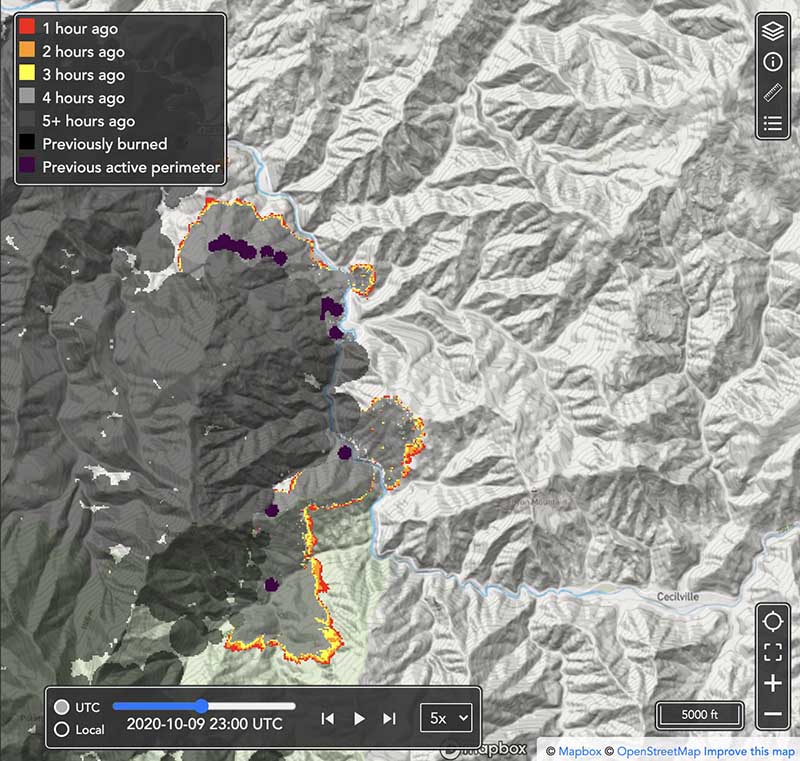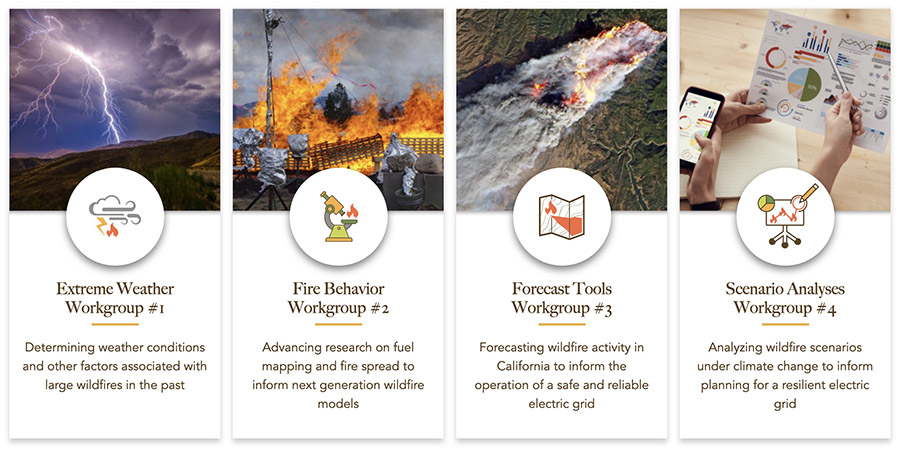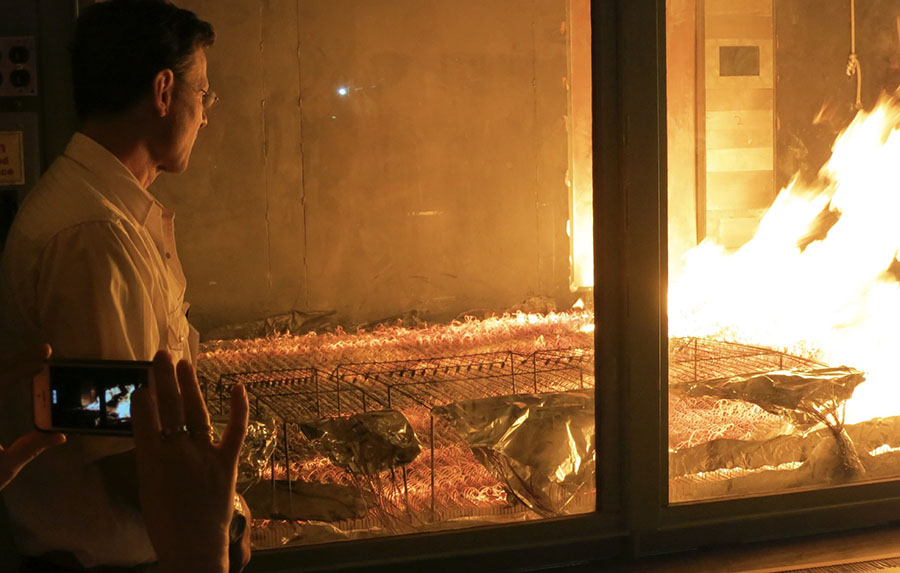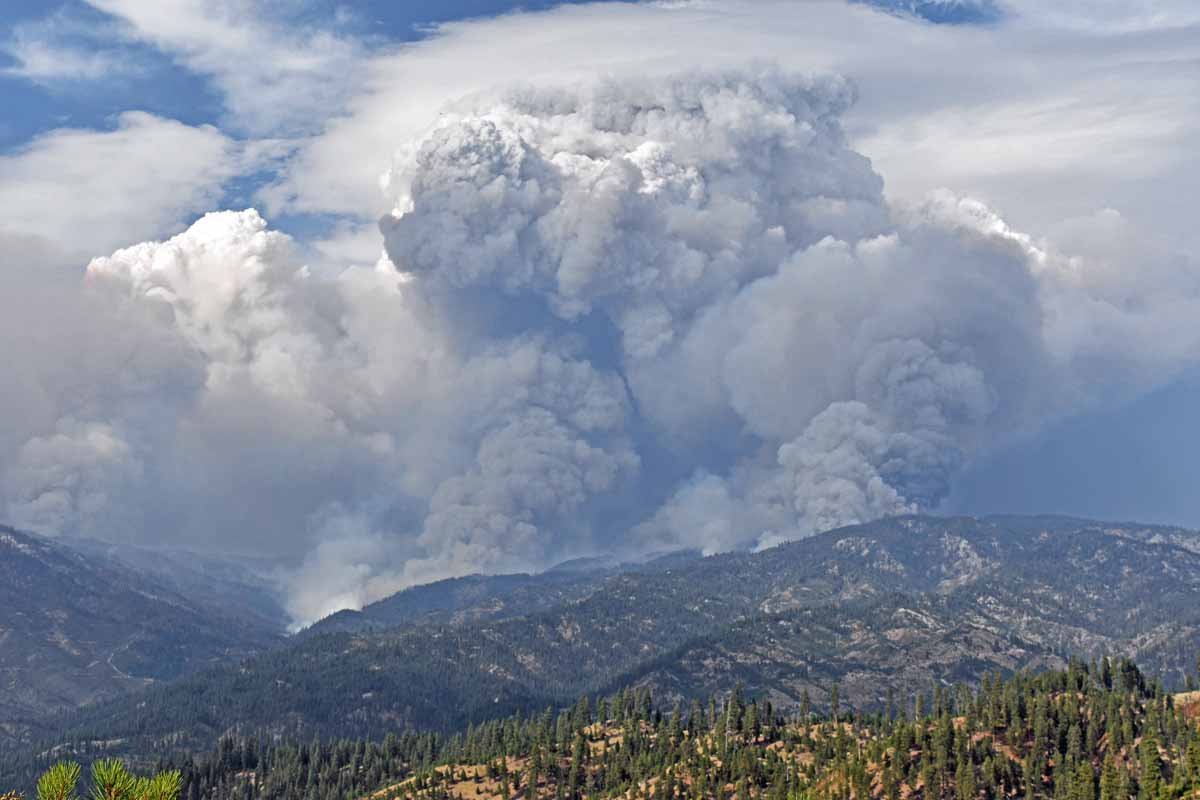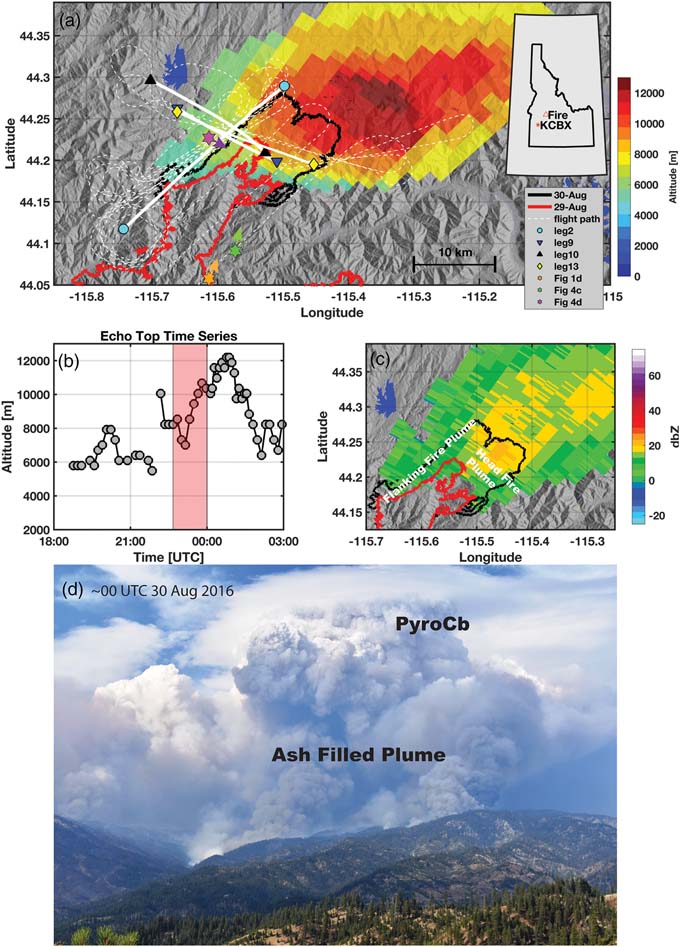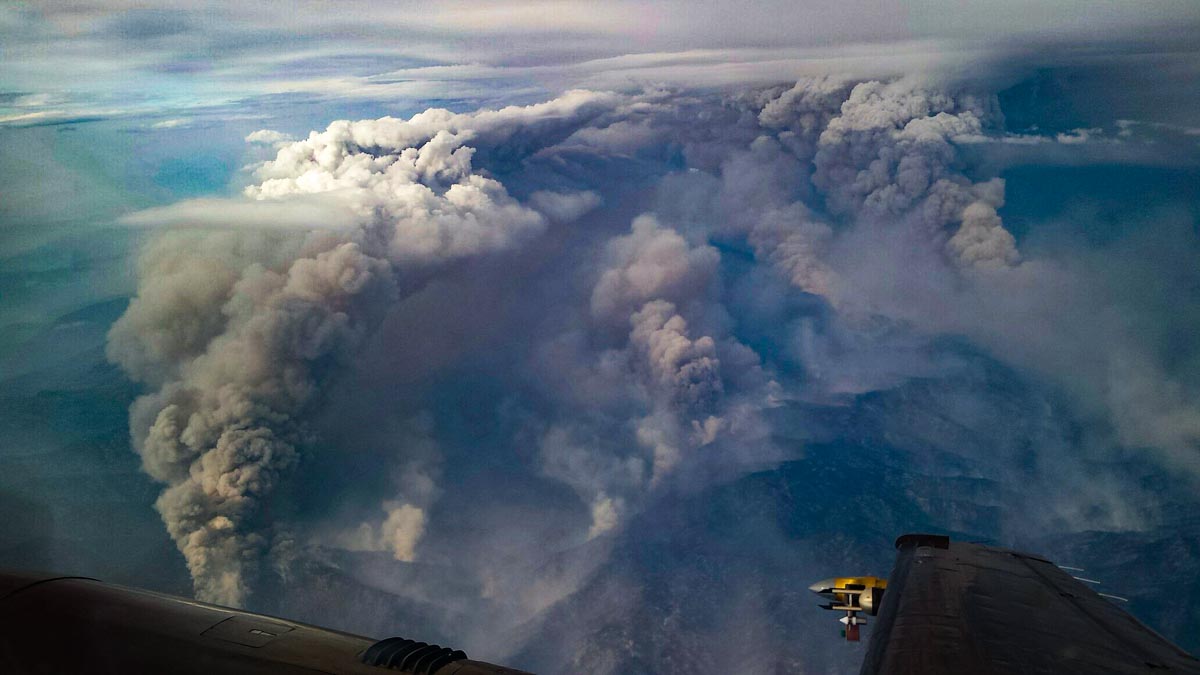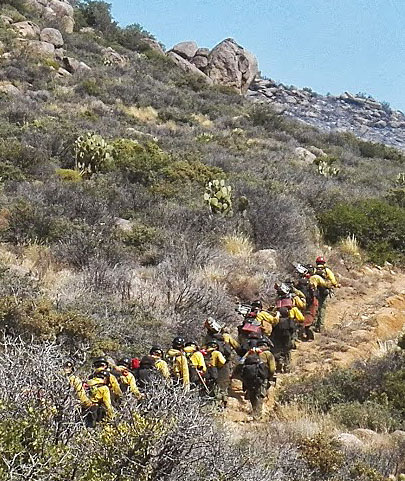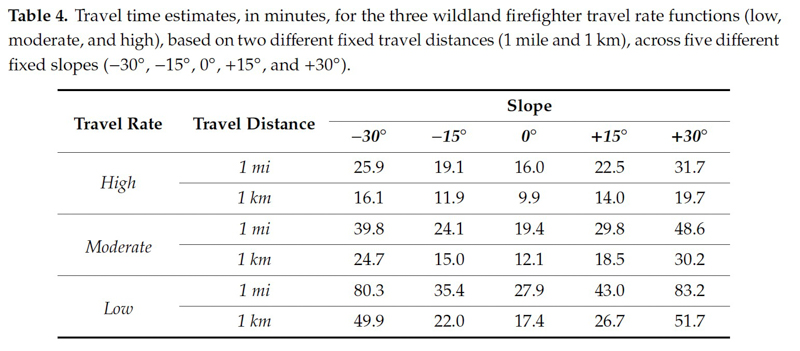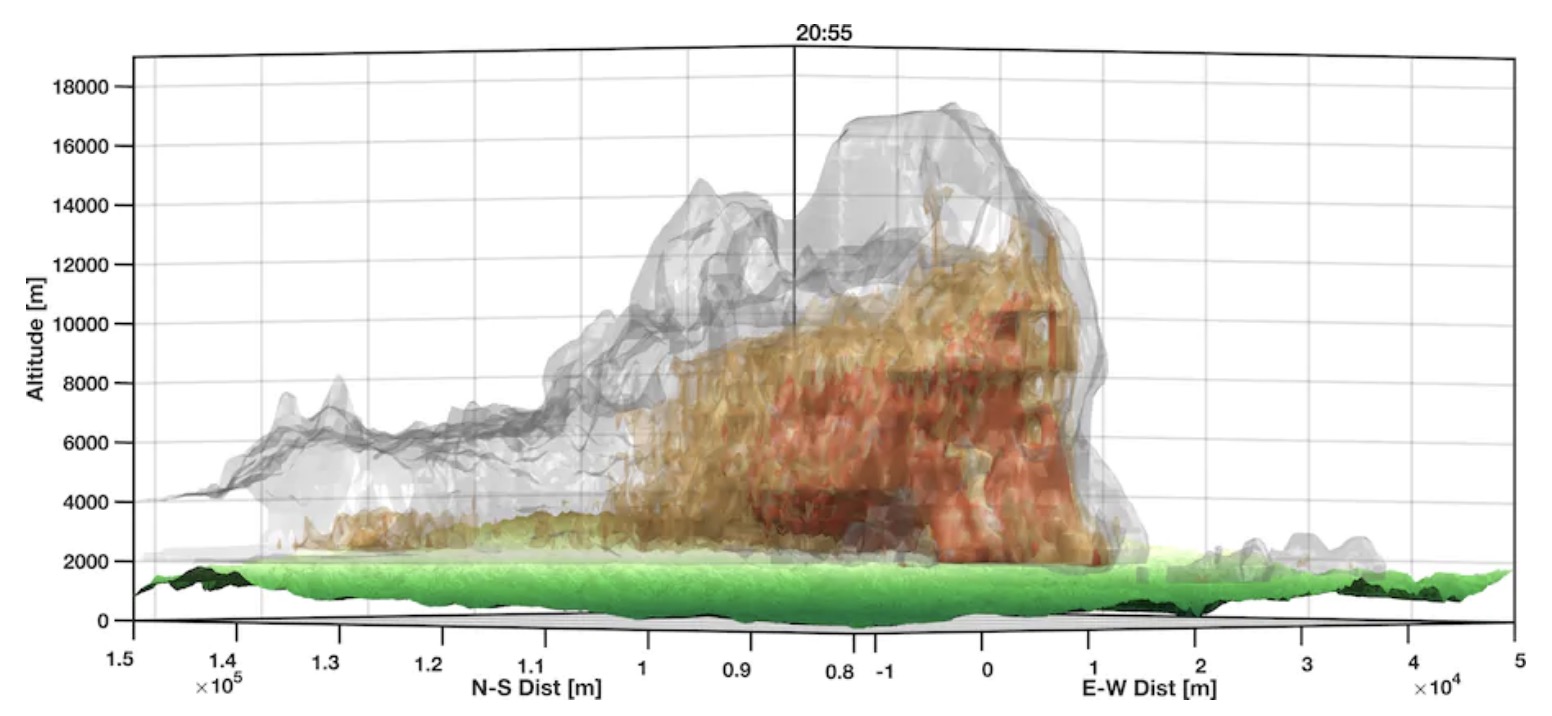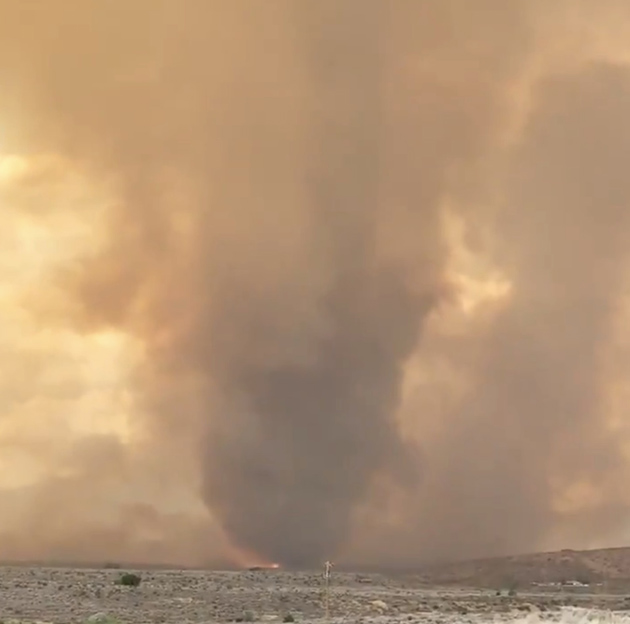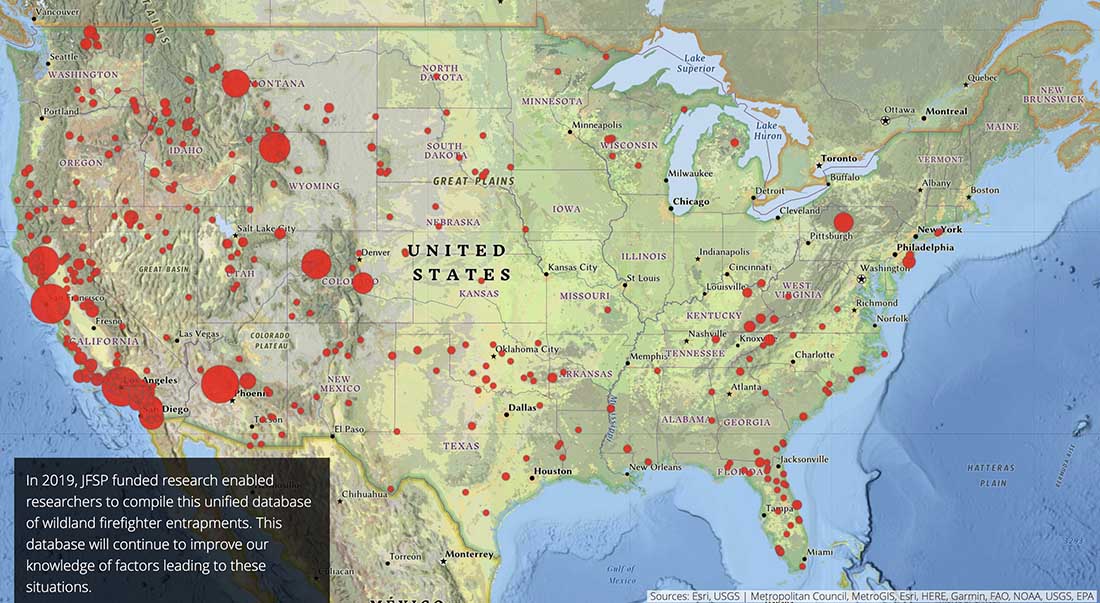
The Joint Fire Science Program (JFSP) has produced a story map highlighting some of the organization’s success stories, in particular their research in entrapment avoidance, safety zones, and escape routes.
The screenshot above is from an interesting interactive map in the presentation showing the locations where wildland firefighters were burned over by fires. The size of the circle is proportional to the number of personnel involved in each incident, but not every burnover resulted in fatalities. A click on the circle brings up a few details about the incident.
The JFSP was established by Congress in 1998 and is jointly funded by the Department of the Interior and the U.S. Forest Service. The Joint Fire Science Plan written then, (linked to on their website) says the organization “will address issues critical to the success of the fuels management and fire use program.”
In FY 2017, 16 of the 22 JFSP approved and funded research projects were various ways of studying vegetation. Back then we wrote:
It would be refreshing to see more funds put toward projects that would enhance the science, safety, and effectiveness of firefighting.
Since then the emphasis has shifted a little — in a good way. In FY 2020 their research grants were for projects on one of two topics:
- Effectiveness of fuel breaks and fuel break systems.
- Reducing damages and losses to valued resources from wildfire.
And in FY 2021: (they expect total funding to be $1.5 to $3.5 million):
- Sources and distribution of human-caused ignitions and their relation to wildfire impacts.
- Reducing damages and losses to valued resources from wildfire.
Wildfire Today continues to advocate for the the JFSP to place a major emphasis on developing science that can be directly used by wildland fire personnel to enhance their safety, firefighting efficiency, and reduce the undesirable and sometimes catastrophic effects of uncontrolled wildfires on citizens, infrastructure, and property. If the JFSP Plan needs to be revised to accomplish this, then let’s get it done.


